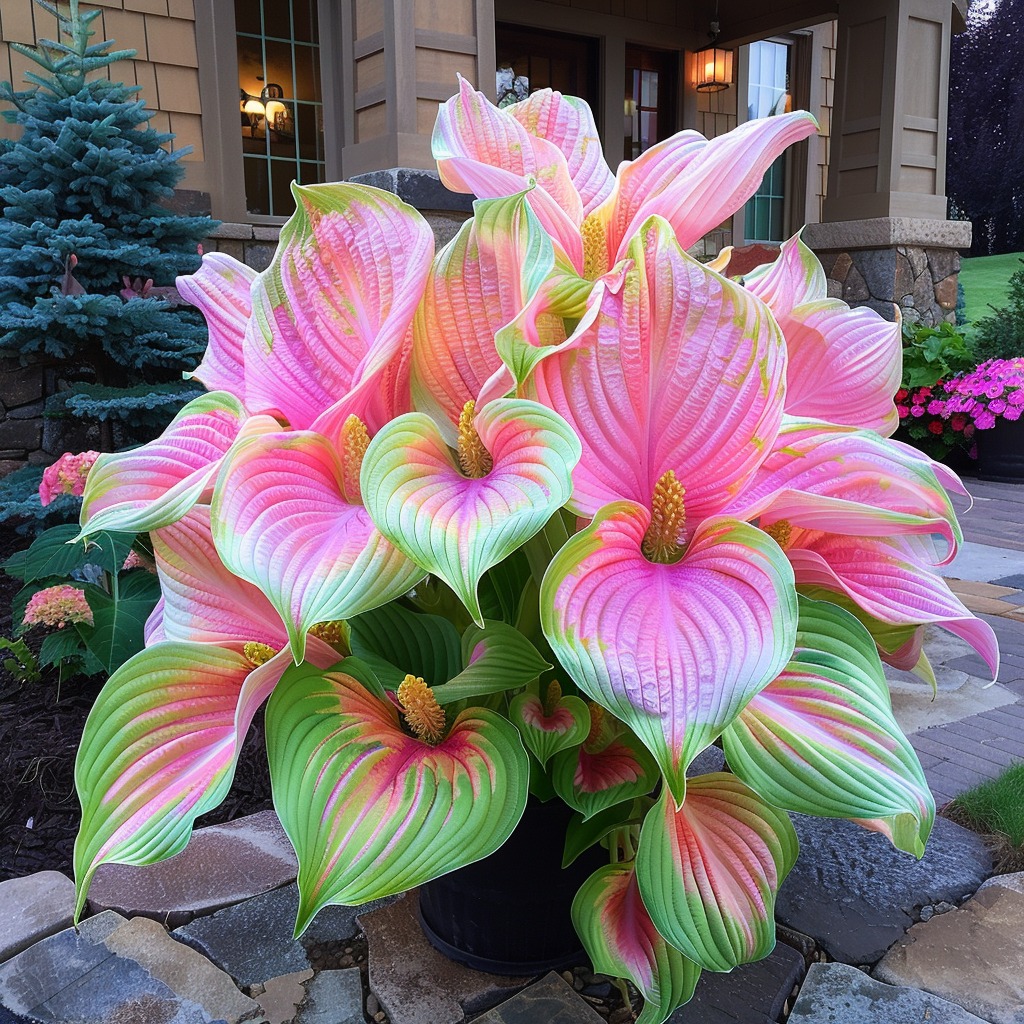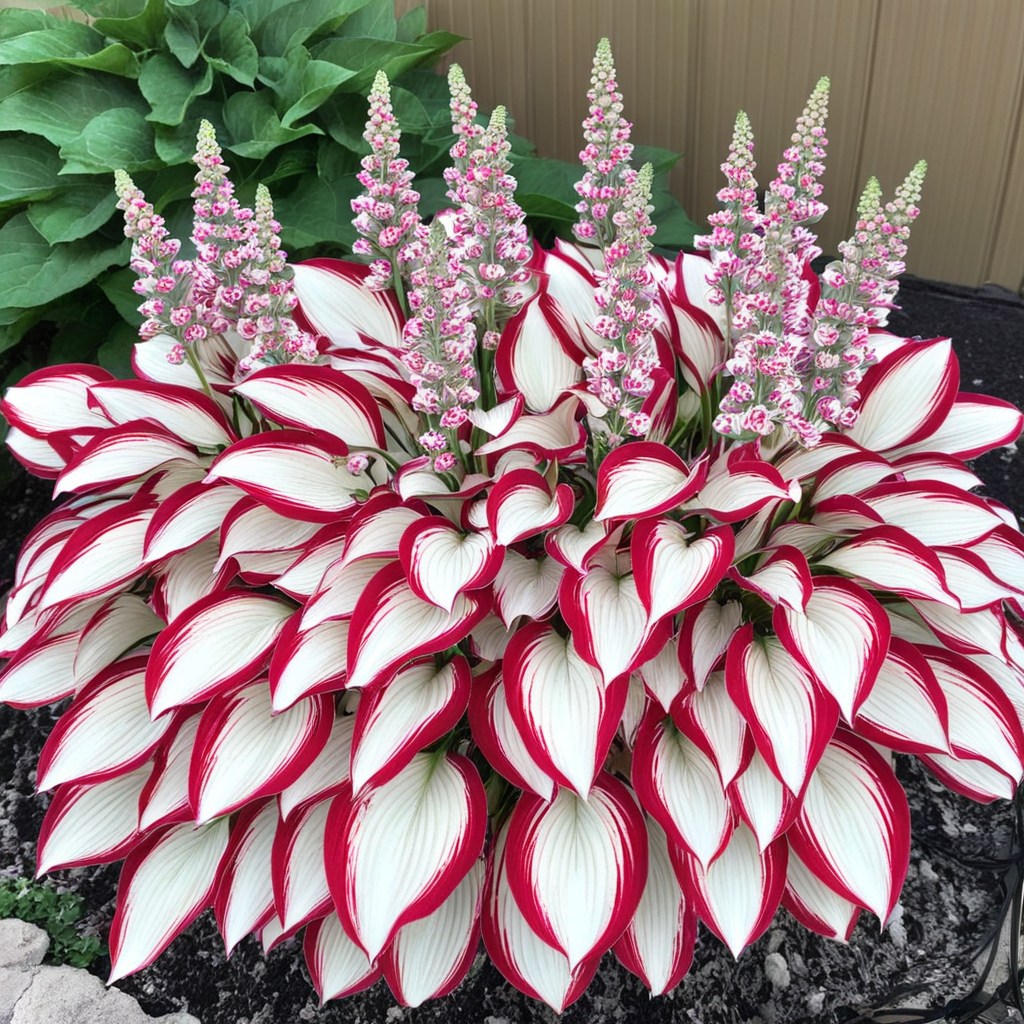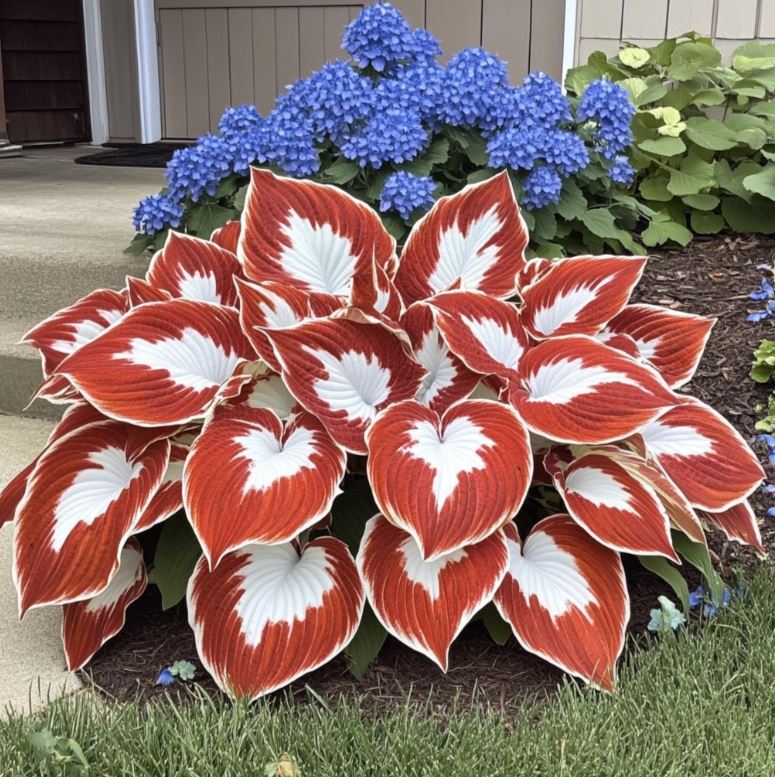The Enchanting Hosta (Hosta spp.): A Comprehensive Guide When we delve into the enchanting world of hostas, we uncover not merely a plant but a canvas upon which nature paints with the broad strokes of diversity and allure. Hostas (Hosta spp.) have evolved into some of the most beloved perennials, owing to their lush foliage and understated elegance. This versatility allows them to thrive in a variety of settings—from serene gardens to urban landscapes—where they add texture and color. With dramatic leaf shapes that can sport hues ranging from deep green to silvery blue, and sometimes even splashes of gold, hostas transform ordinary spaces into verdant sanctuaries. As we embark on this comprehensive guide, let us explore the best practices for growing, buying, and maintaining these captivating plants, unlocking not only their aesthetic potential but also their environmental benefits and ecological significance.

Understanding the Hosta: Diverse Varieties and Tranquil Appeal
Hostas bring a unique tranquility to any garden, radiating an ambiance that whispers serenity. These shade-loving plants excel in bringing life to the dimmest corners of our outdoor spaces, effectively making them crucial allies for gardeners working under challenging conditions. Their extensive varieties offer a breathtaking array of leaf patterns and colors that create an inviting tapestry, harmonizing with flowering plants or standing proudly alone as focal points in any garden landscape.
The Allure of Hosta Varieties
For instance, the Giant Hosta boasts extraordinary dimensions, giving it a focal point stature that draws the eye and encourages interaction. The elegantly ruffled edges of the Curly Fries Hosta offer a mesmerizing contrast to the broad, glossy leaves of the Sum and Substance variety. The Halcyon Hosta, with its striking silver-blue foliage, radiates a serene presence that calms the senses, while the Golden Sunburst Hosta’s vibrant yellow-green hues inject a burst of energy into the garden. These diverse varieties, each with their unique characteristics, allow gardeners to curate a harmonious symphony of textures, shapes, and colors that captivate the senses and elevate the overall aesthetic of the outdoor space.
Hosta’s Relationship with the Environment
Hostas’ versatility extends beyond their visual appeal, as they play a crucial role in the local ecosystem. These plants provide shelter and sustenance for a variety of creatures, from butterflies and hummingbirds to small mammals and beneficial insects. By incorporating hostas into the garden, gardeners can actively contribute to the health and biodiversity of their immediate environment, fostering a thriving habitat that supports the delicate balance of nature.

Unlocking the Tranquil Ambiance
The tranquil ambiance that hostas inspire is not just a result of their elegant foliage, but also their ability to create a sense of serenity and calm. Whether planted in a shaded woodland setting or as part of a serene Japanese-inspired garden, hostas possess an innate quality that invites visitors to slow down, relax, and immerse themselves in the beauty of the natural world. This calming presence makes them invaluable additions to garden spaces, transforming them into oases of tranquility amidst the bustling pace of everyday life.
Mastering the Art of Growth: Cultivating Hostas with Care
To successfully cultivate hostas, one must master not just the art of planting but also the nuances of care and maintenance. Pioneering guides stress the importance of considering factors such as soil quality, moisture levels, and sunlight exposure to tailor specific needs for each variety. It’s worth noting that hostas thrive best in moist, well-drained soils rich in organic matter, hinting at a more profound relationship between these plants and their environment.
Soil Preparation and Drainage
Proper soil preparation is crucial for the success of hosta cultivation. Gardeners should focus on creating a well-drained, nutrient-rich soil that mimics the natural habitat of these plants. Incorporating organic matter, such as compost or well-rotted manure, can significantly improve soil structure and fertility, providing the ideal conditions for hostas to flourish. Ensuring adequate drainage is also essential, as these plants are susceptible to root rot in overly wet or poorly draining soils.

Sunlight and Moisture Requirements
While hostas are primarily shade-loving plants, the specific sunlight requirements can vary depending on the variety. Some cultivars, such as the Sun and Substance Hosta, can tolerate more direct sunlight, while others, like the Halcyon Hosta, prefer the dappled shade of a woodland setting. Understanding these nuanced needs allows gardeners to position their hostas strategically, maximizing their growth and vibrancy.
Consistent moisture is another critical factor in hosta cultivation. These plants thrive in consistently moist, but not waterlogged, soil. Regular watering during dry spells or periods of drought can help maintain the lush, verdant foliage that hostas are known for. However, it’s important to avoid overwatering, as this can lead to root rot and other fungal issues.
Feeding and Mulching Practices
Providing the right nutrients is essential for the long-term health and vigor of hostas. Gardeners can incorporate slow-release, balanced fertilizers or compost-based amendments into the soil during the growing season, ensuring a steady supply of essential macro and micronutrients. Mulching around the plants can also help retain soil moisture, suppress weed growth, and gradually release nutrients as the organic matter decomposes.
Pest and Disease Management
While hostas are generally hardy plants, they can be susceptible to certain pests and diseases if not properly cared for. Vigilant monitoring and prompt action can help address issues such as slugs, snails, and fungal diseases like crown rot or leaf spot. Adopting organic pest control methods, maintaining good air circulation, and implementing proper sanitation practices can help gardeners stay ahead of potential problems and ensure the long-term wellbeing of their hosta collections.
Unique Applications in Gardening: Night Gardens and Beyond
Imagine stepping into a garden where the delicate fragrance of night-blooming flowers dances through the air while the soft silver-blue leaves of hostas reflect the moonlight. This idea isn’t just poetic; it’s a very tangible way to elevate the garden’s sensory experiences. Creating an enchanting night garden offers yet another facet to hostas’ versatility, as they can form rich backdrops against ethereal blooms while thriving in partial shade, thus expanding their application beyond mere daytime beauty.
Hostas in Night Gardens
The gentle glow of hostas under the night sky can transform a garden into a serene, otherworldly oasis. Their silvery or blue-tinted foliage reflects the moonlight, creating a mesmerizing interplay of light and shadow that captivates the senses. When paired with fragrant, night-blooming plants like angel’s trumpet (Brugmansia), moonflowers (Ipomoea), or night-scented stocks (Matthiola), the resulting ambiance is nothing short of enchanting. These night-garden vignettes invite visitors to linger, soak in the tranquility, and reconnect with the natural world in a truly unique and immersive way.
Complementing Other Flora
The potential of hostas is not limited solely to standalone displays; they possess an innate ability to complement a plethora of other flora in a garden. When combined with annuals or flowering perennials, the rich textures and varied leaf patterns of hostas enhance visual depth and complexity. For instance, the juxtaposition between vibrant flowers like astilbes or ferns creates an engaging dialogue within the garden space, where each element contributes to a cohesive ecosystem. This facilitates not just visual appeal, but increases biodiversity, encouraging a flourishing habitat for pollinators and beneficial insects.
Versatility in Garden Design
Hostas’ versatility extends far beyond their role in night gardens or as companion plants. Their diverse foliage characteristics and growth habits allow them to be integrated into a wide range of garden design styles, from modern minimalist landscapes to traditional cottage gardens. Whether used as edging plants, groundcovers, or as focal points in mixed borders, hostas seamlessly adapt to the gardener’s vision, elevating the overall aesthetic and creating a sense of cohesion and harmony throughout the outdoor space.
Ecological Significance
Beyond their aesthetic contributions, hostas play a crucial role in supporting local ecosystems. By providing food and shelter for a variety of creatures, from butterflies and hummingbirds to small mammals and beneficial insects, these plants actively contribute to the biodiversity of the garden. This ecological significance underscores the importance of incorporating hostas and other native or wildlife-friendly plants into our outdoor spaces, fostering a thriving and sustainable environment that benefits both human and non-human inhabitants alike.
Conclusion
As we explore the manifold possibilities that hostas offer in both aesthetics and ecology, it becomes clear that their enchantment lies deeply rooted in their adaptability and beauty. They symbolize not just the artistry of nature but also a call for mindfulness towards sustainable gardening practices, ethical sourcing, and cultivating environments that resonate with both human and non-human inhabitants alike. Each hosta planted reflects a decision toward fostering diversity and stability within the ecosystem—a small yet significant act of creativity in the grand tapestry of our natural surroundings.




